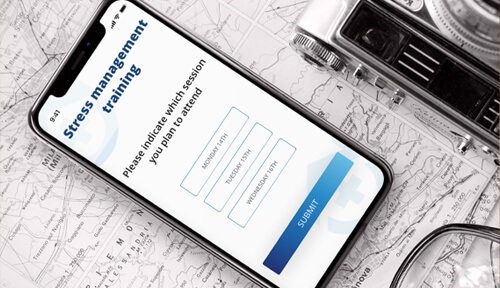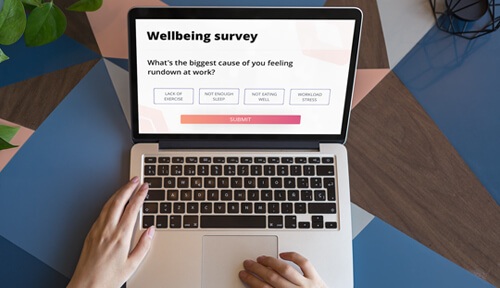
Employees are typically spending less time physically active and more time at their desk. This can have a detrimental impact on them – and the organization. There’s no longer any doubt that work affects health.
Offering and promoting workplace wellness programs is important to benefit both employee health and business strength.
These six simple and effective tips will help you communicate your wellness initiatives:
1. Social skills
Internal social media channels are a great way to provide support for a workplace wellness program. For example, executives can provide an endorsement by writing a personal blog about their efforts.
Online support groups can share tips, offer suggestions or ask questions. Staff could submit ideas related to a health topic or practice, such as ex-smokers contributing to “Tips I used to quit”.

2. Let’s get visual
Using computer screensavers can provide a great way to raise the profile of the workplace wellness program and its related initiatives. Screensaver messages are particularly powerful in open-plan office environments as they act as digital billboards throughout the organization.
Messaging can be used to advertise the wellness program, promote the availability of healthy food options within the organization, and publicly recognize people who meet their wellness or weight loss goals. It can also raise awareness of workplace wellness benefits (such as discounted gym membership, a free health assessment, or flu jabs), and promote support services available to staff (like showers, secure bike storage, lunchtime education sessions, and workshops).

3. It’s all about timing
The timing for your wellness communications should be considered. When are employees likely to be most receptive? Monday morning or Friday night?
Think about when workplace wellness programs will have the most effective cut-through. When will it get the most attention? Perhaps early in the new year when people have good intentions? Or in Spring when people tend to come out of hibernation.
Wherever possible, schedule wellness communications to be delivered at optimum times for maximum readership. Coordinate timing with related events both internally and externally, such as national smoke-free days.

Learn how a healthier workplace is a high-performing workplace through better workplace wellness communication.
4. Maintaining motivation
Launching a program for wellness in the workplace is one thing. Sustaining ongoing participation and creating a long-term wellness culture is another.
Effective communication requires frequent contact through multiple channels. Communicators need to think beyond the launch and provide a series of ongoing reminders and tips.
Behavior change requires consistent effort and focus over a period of time. Consider using tools such as desktop tickers to deliver daily tips, reminders, and inspiration.

5. A team effort
A user-generated internal newsletter can focus attention on health and wellness with limited resources. Employees can be invited to contribute news and articles.
For example, special interest groups could have their own section to tell stories, share tips and publicly recognize a healthy employee who met their wellness goals. Individuals can advertise group wellness activities such as walking or running clubs at lunch time, on-site bike races, or group fitness sessions.
In addition, any area of the business (including wellness partners) could contribute features such as interviews with participants, ‘ask the expert’ features, updates on health trends, links to tools, and tips and resources available for staff.

6. Made to measure
Wellness programs need to be outcome-oriented. Employee participation is a very important early measure.
The actual gains from a workplace wellness program may be realized over the long term rather than the short term. However this is not a reason to delay early measurement – you can track behavior data as an early indicator. For example, the increase in company gym memberships, changes in food consumption in the cafeteria, walking and pedometer results, number of vaccinations, and so on.
In addition, you can use benchmark staff surveys to track perceptions. What’s popular and what isn’t? Did initiatives offered meet employee needs?
Interview employees to see how the program is affecting and influencing attitudes. Review in-house data to assess benefits, for example, changes to sick leave, health claims, or absenteeism.
See for yourself how SnapComms works for promoting workplace wellness programs.


